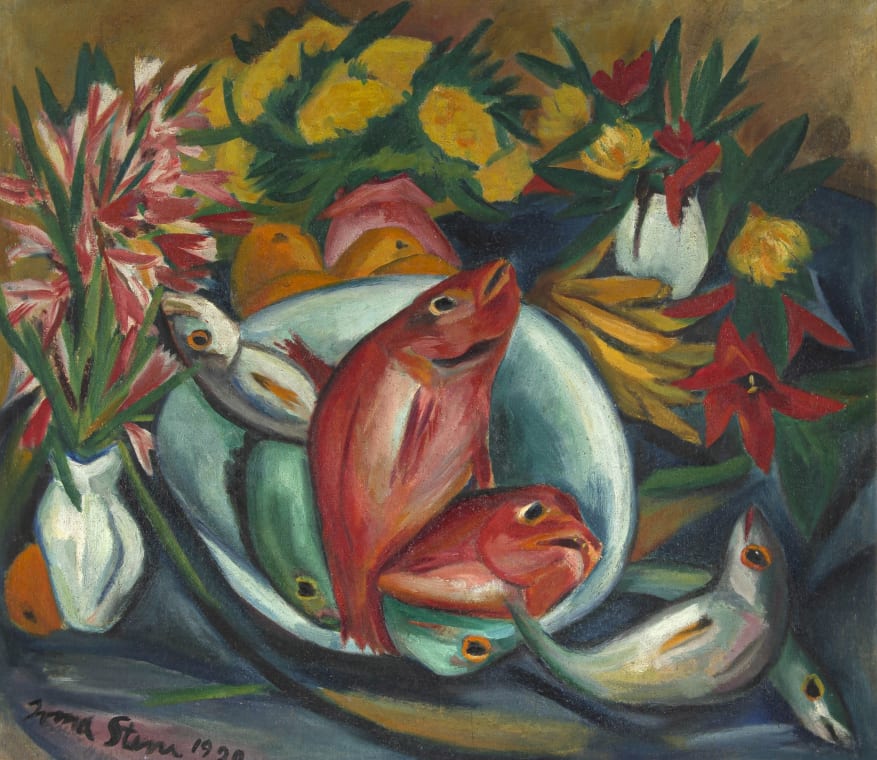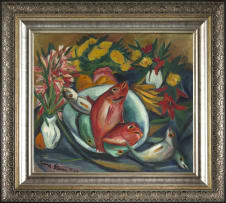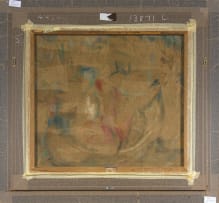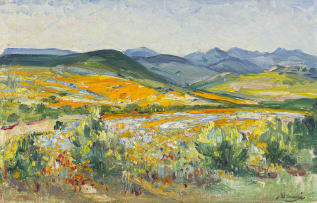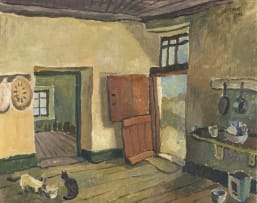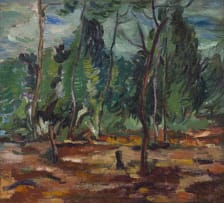Modern and Contemporary Art
Live Virtual Auction, 21 September 2022
Evening Sale
About this Item
signed and dated 1920
Notes
The peripatetic Stern family returned to South Africa from Germany in the second half of 1920, following a lengthy exile. Irma Stern was 26. It is unknown if this vibrant canvas dominated by tropical table fish, lilies, and citrus was produced in Berlin before Stern's move south. The lavish table display proposes an abundance befitting a wedding gift but, in 1920, would have described a reality at odds with the difficult socio-economic conditions in Germany following World War One and the ensuing November Revolution (1918-19), depredations the wealthy Stern family were mostly insulated from. Previous catalogue notes indicate the composition was based on a scene that Stern observed in the kitchen of her maternal aunt, Erna Harris (née Fels), whose daughter it was gifted to at her wedding. Erna was one of seven siblings born into a Jewish family from Einbeck in Lower Saxony. The artist was close to her maternal family. Erna is mentioned by name in a letter from Cape Town to Trude Bosse, a childhood friend from Einbeck whose grandparents leased a home to the Fels family.1
Whatever the circumstances and location of its production, this work encapsulates distinctive attributes of Stern's early style and use of the still life as a viable genre for painterly experiments. Stern's debut solo exhibition with Berlin dealer Fritz Gurlitt in 1919 included two still lifes. The show received polite notices. "Irma Stern paints in all kinds of modern styles," noted the Berliner Tageblatt.2 It was a fair observation. Early on, Stern adopted impressionist and expressionist approaches to rendering subjects from life. In contrast to Green Apples (1916), a mannerist composition in the style of Cezanne, this flatly painted canvas is closer in style and ambition to the large expressionist nudes that Stern produced in the early 1920s. Art historian Marion Arnold notes of these works that they show Stern's "confident assimilation of the German Expressionist style in bold delineation, heightened colour and strong tonal contrasts".3
Colour is integral to the experience of this fecund composition. Fish featured prominently in Stern's still life's from the early 1920s (see The Fish God, 1924), their shimmering colours providing a formal challenge that Stern later transferred to her vibrant flower studies.
1. Jutta Hülsewig-Johnen and Irene Below (1996) Irma Stern und der Expressionismus: Afrika und Europa: Bilder und Zeichnungen bis 1945, Bielefeld: Kunsthalle Bielefeld. Page 199.
2. Karel Schoeman (1994) Irma Stern: The Early Years, 1894-1933, Cape Town: South African Library, page 63.
3. Marion Arnold (1995) Irma Stern: A Feast for the Eye, Stellenbosch: Rembrandt van Rijn Art Foundation, page 44.
Provenance
A wedding gift from the artist to her cousin, the daughter of Erna Harris (née Fels).
Bonhams, London, 24 March 2010, lot 9.
5th Avenue Auctioneers, Johannesburg, 6 October 2013, lot 119.
